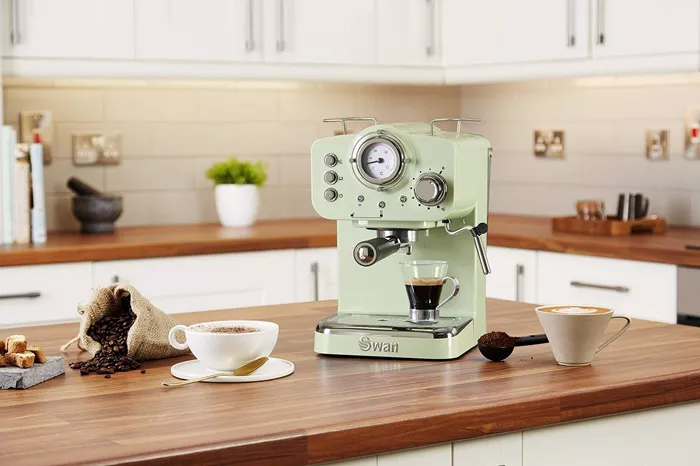Coffee machine pumps are the unsung heroes behind every rich espresso shot and smooth cup of drip coffee. They generate the pressure needed to extract flavors from coffee grounds, especially crucial in espresso machines. Understanding how these pumps work can enhance your appreciation for your daily brew and help you maintain your machine effectively.
Overview of Coffee Machine Pumps
At the heart of every espresso machine lies a pump responsible for creating the pressure required to brew coffee. This pressure forces hot water through finely ground coffee, extracting the rich flavors and aromas that define a quality espresso. Without a pump, achieving the necessary pressure for espresso extraction would be impossible.
Types of Coffee Machine Pumps
There are two main types of pumps used in coffee machines: vibratory pumps and rotary pumps. Each has its unique mechanism and is suited to different applications.
Vibratory Pumps
Vibratory pumps, also known as vibe pumps, are commonly found in home espresso machines. They use an electromagnetic coil to move a piston rapidly back and forth, pushing water through the machine. This rapid movement creates the pressure needed for espresso extraction. Vibratory pumps are compact, affordable, and relatively easy to replace, making them ideal for home use.
Rotary Pumps
Rotary pumps are typically found in commercial espresso machines and high-end home models. They use a spinning disc and vanes to create consistent pressure. As the disc rotates, the vanes press against the chamber walls, reducing the volume and increasing the pressure to push water through the coffee grounds. Rotary pumps are known for their durability, quiet operation, and consistent pressure delivery.
How Pumps Generate Pressure
Espresso machines require approximately 9 bars of pressure, equivalent to about 130 psi, to properly extract coffee. This high pressure ensures that water passes through the tightly packed coffee grounds at the right speed, extracting the optimal flavors and creating the characteristic crema on top of the espresso shot.
Comparison of Vibratory vs. Rotary Pumps
Understanding the differences between vibratory and rotary pumps can help you choose the right espresso machine for your needs.
Vibratory Pumps
Pros
Smaller size, allowing for compact machine designs.
More affordable, making them accessible for home users.
Easier to replace due to their simpler design.
Cons
Slightly noisier operation compared to rotary pumps.
Shorter lifespan, typically around 5-6 years.
Less consistent pressure, which can affect espresso quality.
Rotary Pumps
Pros
Quieter operation, suitable for environments where noise is a concern.
More consistent pressure, leading to better espresso extraction.
Serious Eats
Longer lifespan, often exceeding 15 years with proper maintenance.
Cons
Larger size, requiring more space within the machine.
More expensive, reflecting their complex design and durability.
Seattle Coffee Gear
More complex maintenance, often requiring professional servicing.
Pump Function in Different Coffee Machines
The type of pump used in a coffee machine significantly influences its performance and suitability for different settings.
Espresso Machines
Espresso machines rely heavily on pumps to generate the high pressure needed for espresso extraction. Home espresso machines often use vibratory pumps due to their compact size and affordability. In contrast, commercial machines typically use rotary pumps for their durability and consistent pressure delivery, essential for high-volume environments.
Drip Coffee Makers
Drip coffee makers operate differently and generally do not require high-pressure pumps. Instead, they rely on gravity and simple heating elements to move water through the coffee grounds. As a result, they do not produce the same pressure levels as espresso machines and do not require the same type of pump.
Common Issues & Maintenance
Regular maintenance of your coffee machine’s pump is crucial to ensure its longevity and consistent performance. Common issues include:
Limescale Buildup: Hard water can cause mineral deposits to accumulate, affecting pump efficiency. Regular descaling is recommended.
Leaks: Worn seals or loose connections can lead to water leaks. Inspect and replace seals as needed.
Noise: Unusual noises may indicate a failing pump or air trapped in the system. Bleeding the system or consulting a technician may be necessary.
Inconsistent Pressure: Fluctuating pressure can result from a failing pump or blockages. Regular cleaning and maintenance can prevent this.
For vibratory pumps, replacement is relatively straightforward and cost-effective. Rotary pumps, while more durable, may require professional servicing due to their complex design.
Conclusion
Understanding how coffee machine pumps work enhances your appreciation for the intricate process behind each cup of coffee. Whether you’re a home enthusiast or a professional barista, recognizing the differences between vibratory and rotary pumps can guide you in choosing the right machine and maintaining it for optimal performance. Regular maintenance ensures your machine continues to deliver delicious coffee for years to come.
Related topics:
- How Do Stovetop Coffee Makers Work?
- 3 Best Nespresso Pods for Latte
- How Do Filter Coffee Machines Work?


